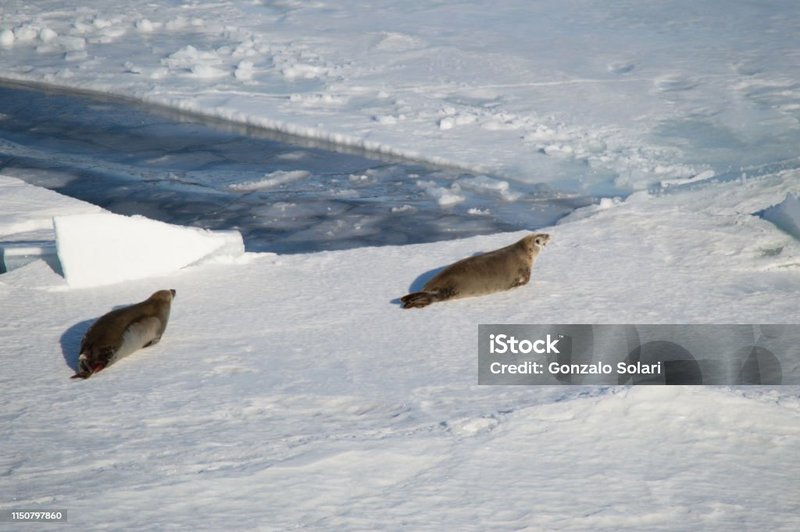
Imagine you’re on the beach, feeling the warm sand between your toes while watching a group of seals basking in the sun. It’s tempting to get closer, snap a photo, or even try to pet one. But here’s the thing: seals are wild animals, not pets. Like a curious friend who has boundary issues, they can be unpredictable. So, let’s clarify how we can engage with these captivating creatures without causing harm to them—or ourselves.
Understanding Seal Behavior
To interact safely with seals, it’s crucial to understand their behavior. Seals are social animals that live in colonies, often seen lounging together on the beach or swimming in the open water. They communicate through a variety of sounds, and their body language can tell you a lot about their mood. For instance, if a seal is making loud barking noises, it may feel threatened or agitated.
One important thing to note is that seals can be quite protective of their space, especially if they have pups nearby. Seals might display aggressive behavior if they feel cornered, similar to how a dog might react if it feels threatened. So, when observing seals, it’s essential to give them space. A good rule of thumb is to stay at least 150 feet away. This ensures that you don’t intrude on their personal bubble and gives them the chance to feel secure.
In addition to their social nature, seals are also curious creatures. This curiosity could lead them to approach humans, which is part of what makes interactions so memorable. However, it’s essential to remember that these animals are still wild and can react unpredictably. Always approach with caution and respect, as you would with any wild animal.
Where to Safely Observe Seals
So, where can you go to observe seals safely? Many coastal areas have designated spots for seal watching. Places like marine reserves and wildlife parks often have guidelines in place for visitors. These places prioritize the safety of their animals while providing a great experience for visitors.
When visiting these locations, look for signs or park rangers who can provide valuable information. They often share tips on the best viewing practices. Following their guidelines not only enhances your experience but also protects the seals.
If you’re lucky enough to visit a seal colony, keep in mind the environment around you. Look for areas where seals naturally gather, such as rocky shores or sandy beaches. Just remember to keep your distance and avoid disturbing their habitat. If you’re on a boat tour, ensure that the company you’re with follows regulations that protect marine life. Ethical tourism is key to preserving these beautiful creatures for future generations.
Essential Safety Guidelines
Now that you have an idea of seal behavior and where to see them, let’s talk about safety guidelines. Interacting with seals doesn’t mean you need to approach them closely. In fact, staying at a safe distance is the best way to ensure you both have a positive experience. Here are some essential guidelines to follow:
- Keep Your Distance: As mentioned earlier, staying at least 150 feet away helps ensure you don’t disturb or stress the seals.
- Don’t Feed Them: While it might be tempting to share your snacks, feeding seals can disrupt their natural hunting instincts and lead to dependency.
- Watch for Warning Signs: If a seal looks agitated or starts to move toward you, calmly back away. Their well-being should always come first.
- Respect Protected Areas: Some beaches may have special designations to protect seals, especially during breeding season. Pay attention to signs and barriers.
Following these guidelines not only keeps you safe, but it also promotes a healthy relationship between humans and seals. Remember, you’re a visitor in their world.
The Importance of Conservation
The interaction between humans and seals goes beyond just a day at the beach. It’s a part of a larger conversation about wildlife conservation. Seals, like many marine animals, face threats from climate change, pollution, and habitat loss. By learning about them and promoting their protection, we can play an active role in their conservation.
You might be wondering how you can help. Supporting marine conservation organizations is a great start. Many of these organizations work tirelessly to protect seal habitats and promote awareness about their conservation status. Every small step counts! Even something as simple as spreading the word about seal protection can make a difference.
Additionally, participating in beach clean-ups or choosing sustainable seafood options can contribute to a healthier ocean environment. Seals thrive in clean waters, so your efforts in conservation can help ensure they continue to thrive.
Examples of Responsible Seal Interaction
To illustrate how humans can interact with seals responsibly, let’s look at a few examples. In places like Channel Islands National Park, visitors are encouraged to observe seals from designated viewing platforms. This way, people can enjoy watching seals without intruding on their natural behavior.
Another good example is wildlife tours that follow strict guidelines. These businesses train their staff on seal behavior and the importance of giving seals space. Tour guides often remind participants to take photos from a distance rather than trying to get up close. This not only enhances safety but also enriches the experience because you can observe seals in their natural habitat.
Lastly, many education programs aim to teach viewers about seals and their role in the ecosystem. These programs encourage respectful and informed interactions, ensuring that the next generation of wildlife enthusiasts understands the importance of protecting marine life.
In summary, the question of whether humans can interact safely with seals boils down to respect and understanding. By appreciating these incredible creatures from a distance, you can enjoy their beauty without putting yourself or them at risk. Remember, seals are wild animals that deserve our respect.
As you embark on your adventure to observe seals, keep these guidelines in mind. With a little patience and a healthy dose of respect, you can create memorable experiences that benefit both you and these fascinating marine mammals. So, the next time you’re at the beach and see those curious eyes peeking out of the water, take a moment to appreciate their presence from afar. You’re not just watching a seal; you’re part of a bigger picture focused on conservation and coexistence.

